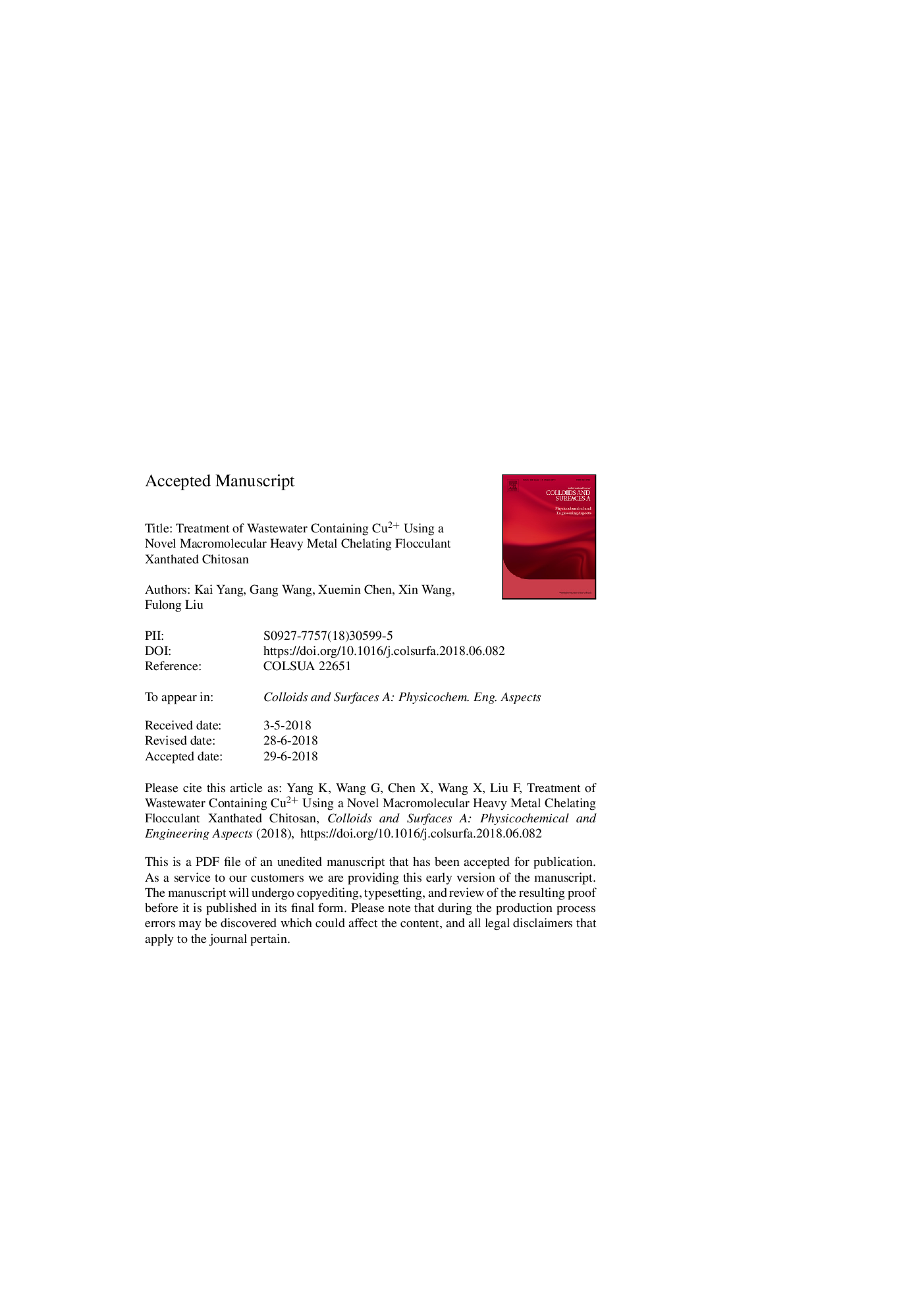| Article ID | Journal | Published Year | Pages | File Type |
|---|---|---|---|---|
| 10139762 | Colloids and Surfaces A: Physicochemical and Engineering Aspects | 2018 | 21 Pages |
Abstract
A novel macromolecular heavy metal chelating flocculant, xanthated chitosan (XCTS), was prepared by reacting chitosan with benzaldehyde, NaOH and CS2. In a series of experiments, the flocculation performance of XCTS was evaluated by testing the removal rate of Cu2+ and/or turbidity. Factors that could affect the process such as pH, initial Cu2+ concentration, co-existing organic complexing agents and turbidity were studied. The results showed that XCTS could remove both Cu2+ and turbidity from wastewater with a removal rate of Cu2+ exceeding 97%. When water samples contained Cu2+ and turbidity-causing substance, the removal rate of Cu2+ and turbidity would be both promoted by a cooperative effect from both materials. At pH 2.0-8.0, the removal rate of Cu2+ increased with the pH. However, the removal rate of Cu2+ reached 92.4% at pH 6.0, indicated that XCTS also had a good effect on copper removal in acidic media. Fourier transform infrared spectroscopy analysis revealed that the dithiocarboxy group on XCTS reacted with Cu2+.
Keywords
Related Topics
Physical Sciences and Engineering
Chemical Engineering
Colloid and Surface Chemistry
Authors
Kai Yang, Gang Wang, Xuemin Chen, Xin Wang, Fulong Liu,
